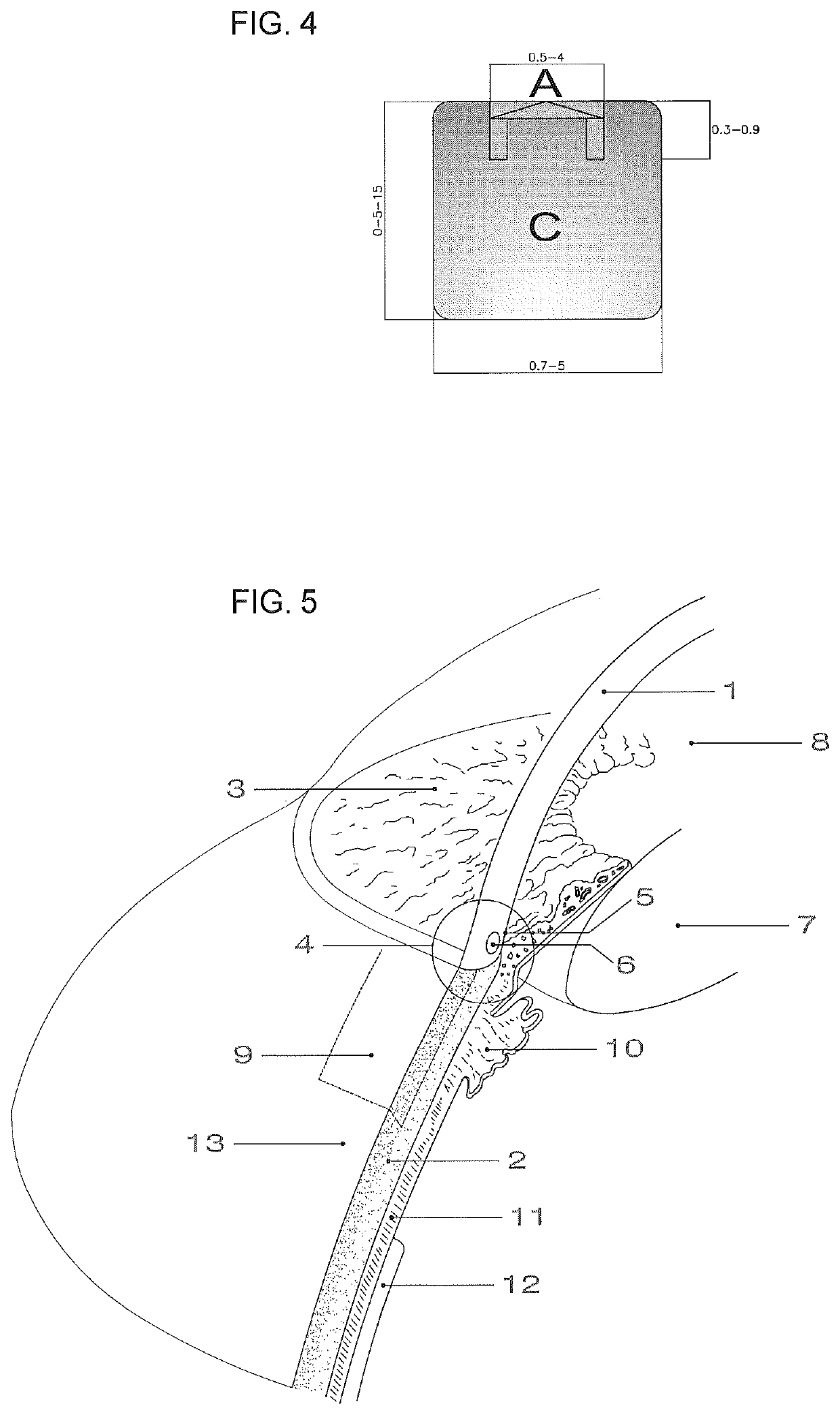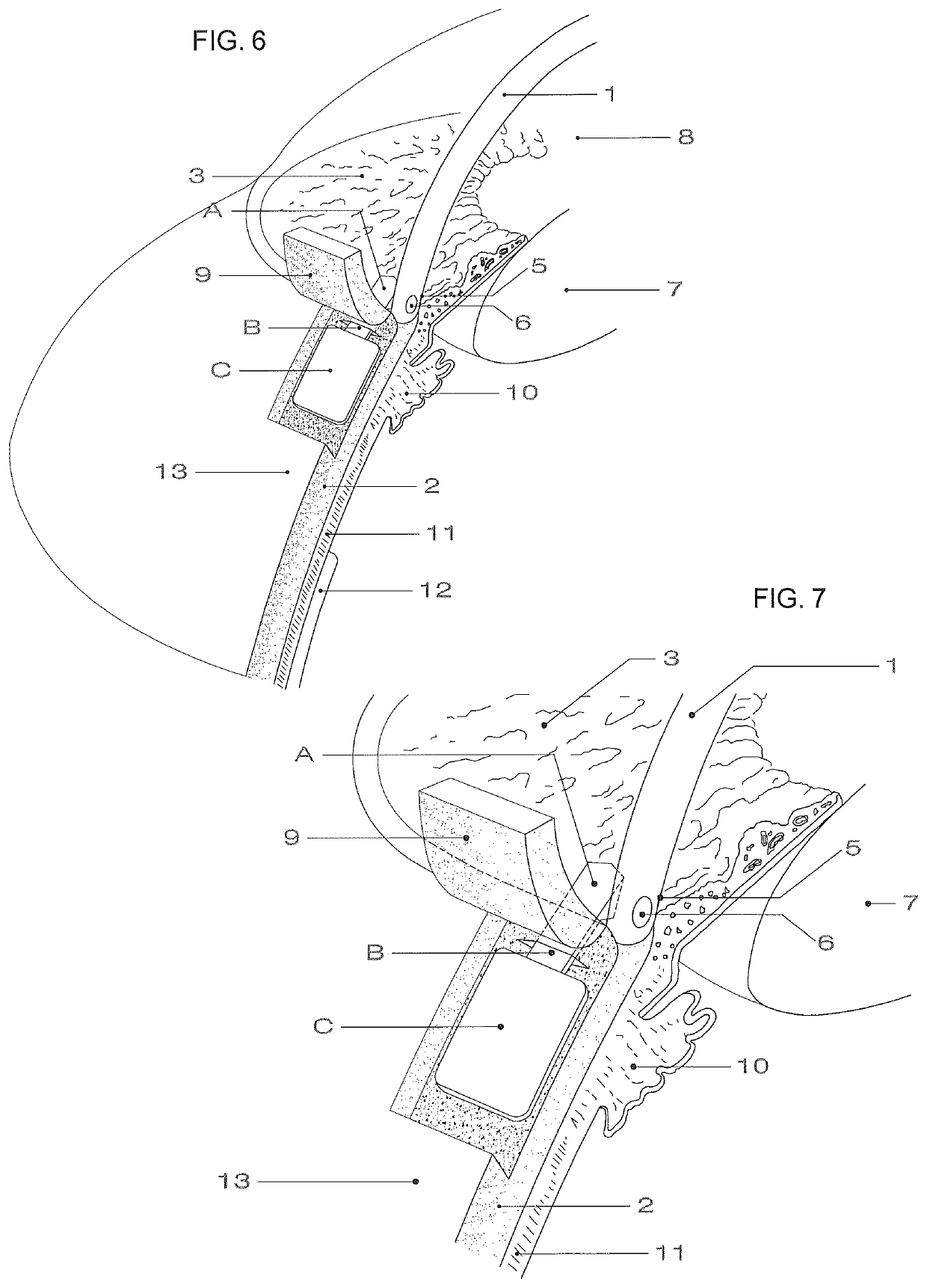One piece flat device of for the drainage of aqueous humor from the eye
a flat device and eye technology, applied in the field of ophthalmic ocular implants, can solve the problems of optic nerve, reduced capacity for draining aqueous humor, total and irreversible loss of sight,
- Summary
- Abstract
- Description
- Claims
- Application Information
AI Technical Summary
Benefits of technology
Problems solved by technology
Method used
Image
Examples
Embodiment Construction
[0032]The present invention consists is an ocular device to produce a new drainage point, consisting of a flat sheet of stainless steel or other materials that does not adhere to the eye tissues. This characteristic of the material is very important, because non-adherence to ocular tissues is essential for the device to achieve the relief of excessive pressure in a suitable manner.
[0033]The device is made of one single piece, and presents three clearly defined parts:[0034]a first part (A), that it is located in the anterior chamber and due to its shape serves as an anchor;[0035]a second part (B), which punctures the corneal limbus and connects the anterior chamber with the exterior of the eye; and[0036]a third part (C), which stays outside the eye in an intra-scleral space, episcleral space or in both.
[0037]In medicine, these spaces (intrascleral and episcleral) are considered as the exterior of the eye. The invention allows the aqueous humor to reach this area, where it is absorbed...
PUM
 Login to View More
Login to View More Abstract
Description
Claims
Application Information
 Login to View More
Login to View More - R&D
- Intellectual Property
- Life Sciences
- Materials
- Tech Scout
- Unparalleled Data Quality
- Higher Quality Content
- 60% Fewer Hallucinations
Browse by: Latest US Patents, China's latest patents, Technical Efficacy Thesaurus, Application Domain, Technology Topic, Popular Technical Reports.
© 2025 PatSnap. All rights reserved.Legal|Privacy policy|Modern Slavery Act Transparency Statement|Sitemap|About US| Contact US: help@patsnap.com



